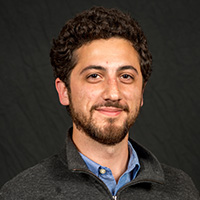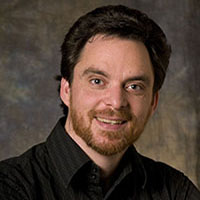By Manuchehr Aminian, Tim Chartier, and Wesley Hamilton
On July 15th, the National Museum of Mathematics (MoMath) hosted the seventh annual iteration of its highly popular New York City (NYC) Math Festival. During this free daylong event—which brings MoMath’s hands-on exhibits and entertaining mathematical games, puzzles, and brain teasers to an outdoor setting—the SIAM Education Committee sponsored a booth that featured two activities with an applied mathematical bent. Manuchehr Aminian (California State Polytechnic University, Pomona) and Wesley Hamilton (MathWorks) collaborated with Tim Chartier (Davidson College and Distinguished Visiting Professor at MoMath) to organize these exhibits. They received generous assistance from the following volunteers of local SIAM student chapters: Kate Knyazeva and Amrit Parmar (Montclair State University) and Rachael Park, Anastasia Polina, and Jerry Yao (New York University).
MoMath is the premier North American cultural institution that focuses on the wonders of mathematics and its many connections to the real world. It houses more than 40 interactive exhibits and has welcomed over 1.2 million visitors since opening in December 2012. The 2023 NYC Math Festival featured MoMath’s iconic 120-foot number line; mathematical juggler John Chase (Walter Johnson High School); mathematical mimes Tim and Tanya Chartier; an outpost of MoMath’s shop, Additions, which sold mathematical books and activities; and much more.
To complement MoMath’s numerous displays, various groups with a passion for popularizing math hosted their own booths. In addition to SIAM, these organizations included the Julia Robinson Mathematics Festival; New York University’s Lab for the Developing Mind; and the award-winning robotics team at Stuyvesant High School, which displayed a competitive ball-throwing robot called Excelsior.
One of the activities at SIAM’s booth explored the Monty Hall problem — a famously misunderstood conditional probability scenario based on the U.S. game show Let’s Make a Deal. During the television show, a contestant is presented with three closed doors; behind one of these doors is a car, and behind the other two are live goats. When the contestant selects a door, the host opens another door to reveal a goat. The contestant can then choose to stick with their original choice or switch to the remaining unknown door; unintuitively, changing their pick gives them a 2/3 probability of winning the car (versus a 1/3 probability when staying with the original door). At the festival, we helped attendees partake in Monty Hall simulations with toy goats and cars and kept a running tally of their choices and results throughout the day. Aside from traditional explanations of conditional probability, visualizing the statistics helped participants gain a “frequentist” perspective on the logic of switching doors.
SIAM’s second exhibit featured nonograms — a Japanese logic puzzle that is similar to Sudoku or Minesweeper, where players must use given information to fill in the pixels of a two-dimensional black and white image by row and column (see Figure 1). Nonograms are somewhat like X-ray computed tomography, in that the puzzle’s numbers indicate what the X-rays “detect” within a medium; the player then has to piece together the original image. Booth volunteers guided participants through basic nonogram strategies—such as edge-case analysis and overlapping runs—and discussed their connection to medical imaging and inverse problems.
Figure 1. A simple nonogram from the SIAM booth at the 2023 New York City Math Festival, which was held on July 15. 1a shows the unsolved grid and 1b reveals the solved puzzle. The digits along the left and top of the grid indicate the number of contiguous boxes that the solver must fill in the corresponding row or column. For instance, the notation “2 1” indicates that the row or column has two contiguous filled boxes, some amount of blank space, and then one filled box. Figure courtesy of Wesley Hamilton.
The 2023 NYC Math Festival was an enriching experience for curious students, parents, and volunteers alike. SIAM volunteer Jerry Yao particularly appreciated the way in which children and parents worked together on the games and puzzles. “The most rewarding thing for me was seeing so many families value education for their children,” Yao said. “It was interesting to see children confused by certain problems—like I used to be—and then gradually understand what was going on after we explained the math.”
In addition to engaging young minds, the festival also united students from different universities who share a passion for applied math and outreach. “For me personally, this was the first time I had an opportunity to connect with my SIAM peers outside of our own chapter at Montclair State University,” SIAM volunteer Kate Knyazeva said. “I’m grateful for festivals like this for allowing me to be part of a beautiful equation of passion, purpose, and community.”
One of the SIAM Education Committee’s broader goals is to provide SIAM members and student chapters with support for interacting with their local communities. As such, the committee is packaging, polishing, and sharing the two activities from the SIAM booth as part of a “festival in a box.” SIAM members are welcome to submit their own tried-and-true resources to the SIAM Education Committee by contacting Wesley Hamilton at [email protected]. These submissions will then become available to all SIAM student chapters and members who are planning to partake in and contribute to future events.
Despite the blistering heat and humidity, the 2023 NYC Math Festival was a phenomenal success. SIAM looks forward to participating again in 2024!
 |
Manuchehr Aminian is an assistant professor in the Department of Mathematics and Statistics at California State Polytechnic University, Pomona. His research interests include mathematical modeling, partial differential equations, and mathematical methods in data science. |
 |
Tim Chartier is the 2022-23 Distinguished Visiting Professor at the National Museum of Mathematics and the Joseph R. Morton Professor of Mathematics and Computer Science at Davidson College. He received an Alfred P. Sloan Research Fellowship and a national teaching award from the Mathematical Association of America. |
| |
Wesley Hamilton works at MathWorks on STEM outreach and workforce development initiatives, prior to which he was a Wylie Assistant Professor at the University of Utah. He also serves on the SIAM Education Committee. |